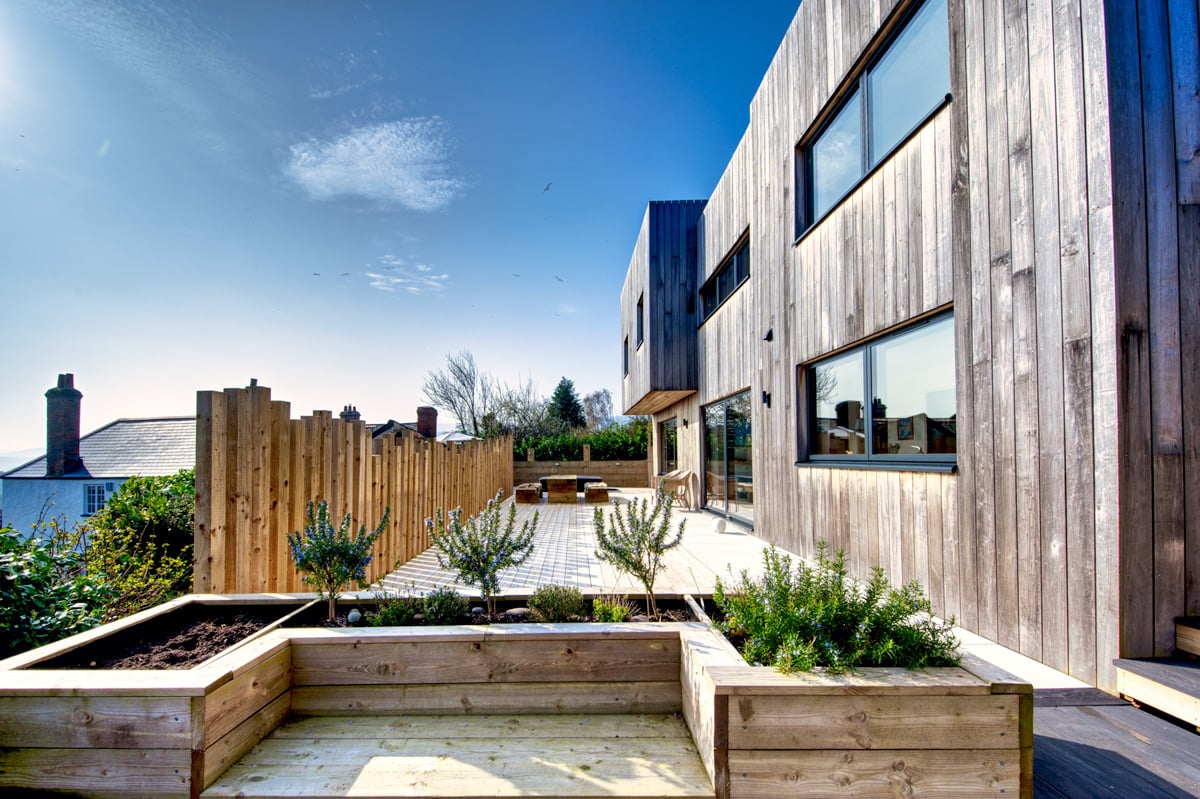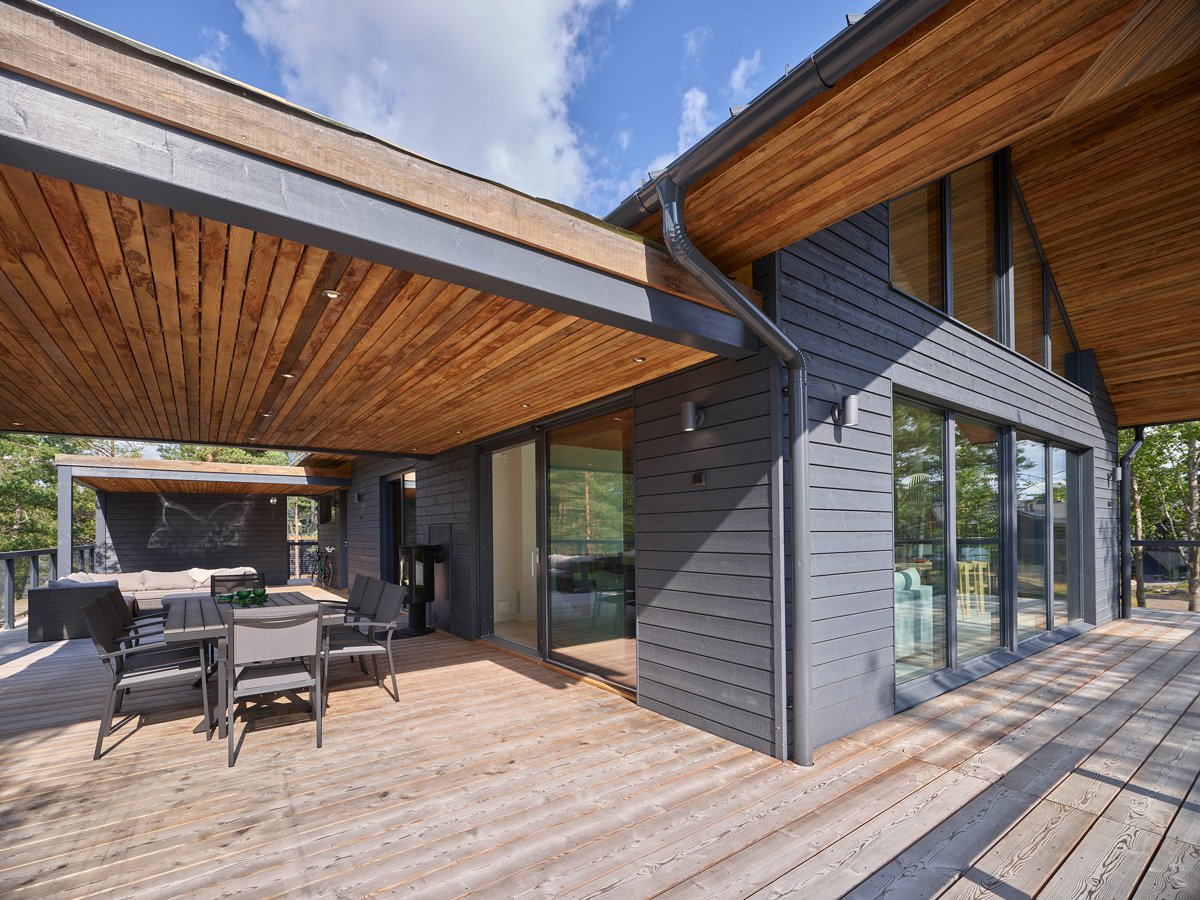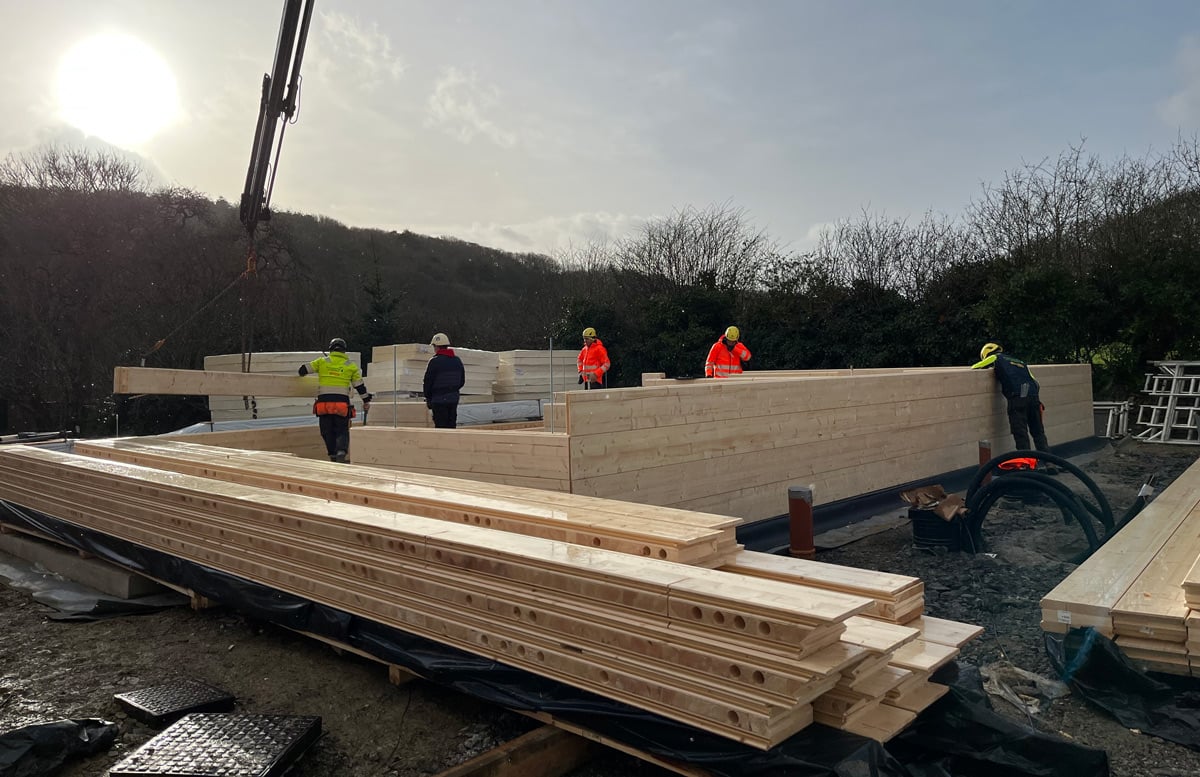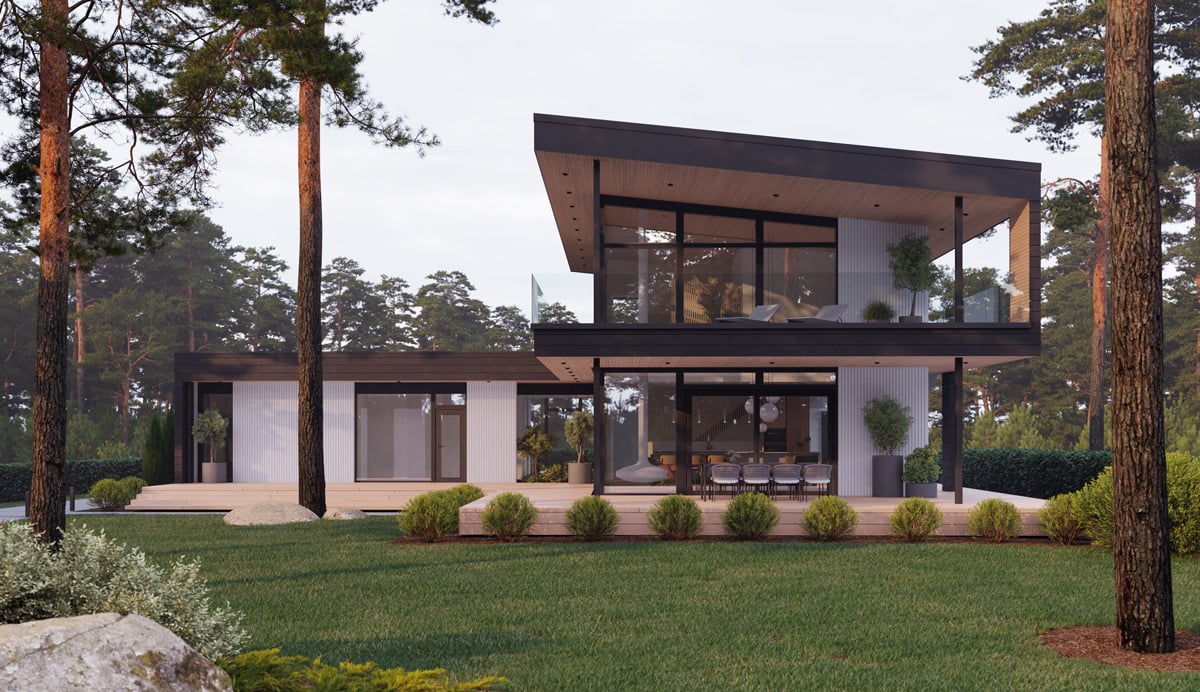When building modern houses, environmental issues and energy efficiency are important considerations. But all too often, buildings constructed with energy efficiency in mind end up being sealed boxes. Honka, a Finnish company, takes a slightly different approach to create energy-efficient solid wood homes that breathe naturally so that homeowners can have the best of both worlds: a low-energy, airtight house that is also healthy to live in.
So what is really special about Honka system, and is it worth considering a solid wood home among all other modern building systems? We will try to answer those questions in this article.
WHAT IS HONKA?
Honka was founded in 1958 as the first industrial log home manufacturer in the world. They have built almost 85,000 houses in 50 different countries around the world and have developed countless innovations that have changed log construction to its core.
Their vision is to manufacture high-quality houses from natural materials allowing people to live and feel better. Honka work in close collaboration with local architects to create bespoke architectural homes that make a bold visual statement without leaving a negative impact on the environment.
HONKA FUSION AS A FABRIC FIRST APPROACH
Honka have been practising a ‘Fabric First’ approach since 1958 by using the most sustainable, environmental, and ecological construction materials available from probably the most sustainable and best-managed forests in the world.
The 'Fabric First' approach to building design emphasises the importance of maximising the performance of building materials and components before resorting to electrical or mechanical building services systems.
This approach can reduce both capital and operational costs, as well as energy consumption and carbon emissions, while also lowering maintenance costs.
Buildings that follow this approach aim to minimise energy consumption by:
- maximising airtightness,
- using high levels of insulation,
- optimising solar gain through the provision of openings and shading,
- optimising natural ventilation,
- utilising the thermal mass of the building’s fabric.

This approach is generally considered more sustainable than relying on renewable technologies or energy-saving products, which can be expensive and may not always be used efficiently by occupants. Honka Fusion technology ticks all the boxes of the fabric first approach and usually avoids using mechanical ventilation, which consumes additional electricity, in line with their commitment to ecological and environmental responsibility.
If you can do it with free solar, thermal mass and natural ventilation, why use another route with less sustainable/environmental materials and the use of additional electricity.
FOCUS ON SUSTAINABILITY
Honka homes utilise cross-laminated timber for their structural frame and wood fibre for wall insulation. These materials are sourced from PEFC-certified forestry, where reforestation efforts exceed deforestation rates, allowing trees to effectively absorb carbon dioxide from the air.
With an area of 150m2, a Honka home can capture approximately 90 tonnes of carbon, equivalent to circling the globe 14 times. Honka aims for an A rating EPC and carbon emissions of zero or better, with a focus on the sustainability benefits of incorporating wood into their homes.

WHAT IS HONKA FUSION TECHNOLOGY?
Honka developed an innovative construction concept, Honka Fusion, that combines massive wood with other building materials, such as glass, stone, and steel. Unlike traditional log houses, Honka Fusion uses vertical, non-settling, cross-laminated solid wood beams that allow for bolder and more diverse structures without the settling issues associated with traditional wood construction.
Honka Fusion houses are ideal for modern architecture and urban settings, and can be finished to meet the architect’s specifications, from thin coat render to stone slips and timber cladding.
The Honka Fusion log is manufactured by crosswise laminating six sections together, and to minimise the settling effects, vertical middle layers of laminated logs are used. The non-settling feature is achieved by incorporating a vertical wood lamella in the middle, a wood-on-wood profile, tight bolting that eliminates installation clearances, and a specialised drying process.
Honka Fusion technology allows for the creation of striking architecture without the typical settling spaces and wide architraves of traditional log construction. This technology retains the advantages of natural, solid wood, while providing architects and designers with greater flexibility to design contemporary and architecturally distinct buildings.

NATURALLY BREATHING LOG WALLS
Honka’s solid wood possesses a remarkable capacity to regulate the effects of moisture and temperature fluctuations within an indoor environment. Their wall structures have been designed with the purpose of preserving the wood’s natural breathability, allowing for unobstructed movement of water vapour between the air and the walls.
Based on a comprehensive study conducted in Europe, it has been found that utilising thicker wood for the interior walls of a residence leads to improved air quality, which is beneficial for one’s health. Moreover, the equilibrium effect of wooden logs has been verified through a test carried out by VTT within a Honka house located in Finland. Also, various studies proved that wooden environments have a similar stress-reducing effect as being exposed to nature.
GREAT AIRTIGHTNESS
The tightness of the log walls and structures is crucial for achieving energy efficiency in Honka log houses. This prevents uncontrollable air leaks and heat loss while also significantly improving living comfort by eliminating drafts. Honka has conducted numerous tests on their houses for airtightness and consistently received excellent results, typically falling within the energy classes A or B.
HONKA FUSION WALL STRUCTURES
Honka have developed low-energy walls that are highly efficient and offer additional thermal insulation, achieving the highest energy classes, which is a standard spec in the UK.
The insulation can be added on either side of the load-bearing wall. However, most commonly, it is fitted externally to improve thermal performance and provide the opportunity to finish the exterior of the house with any proprietary cladding system.

WHAT U-VALUES CAN HONKA FUSION ACHIEVE?
The UK construction industry focuses on achieving passive house standards by emphasising U-values, PSI’s, and airtightness. Companies compete to prove their systems can achieve the lowest values, but Honka takes a different approach and offers unique selling points that set them apart from other building systems.
Despite this, Honka’s U-values meet UK industry standards with additional insulation outside the superstructure as a standard in their UK specification. Honka Fusion technology can achieve the required U-values, PSI’s, and airtightness for passive house certification if their clients require it and are willing to pay for it.
HEATING SYSTEMS FOR LOG HOMES
You can achieve any desired energy class for your Honka home by installing an ecological and modern heating system. There are many energy solutions available for their homes, including geothermal, air source, and water-to-air heat pumps, which are popular among customers in colder climates. Solar panels have also become increasingly popular, as their prices have significantly decreased in recent years.
HONKA AT THE NATIONAL SELF BUILD & RENOVATION CENTRE
Honka have their stand (stand no 82) at the National Self Build & Renovation Centre, where you can speak to them about your project. Because ACA and Honka share the same values about building modern, sustainable and low-energy houses, we established mutual cooperation to help our clients build stunning design houses and maximise their energy efficiency.
HONKA AND ACA PROJECTS

Project on the left: Fabric First garden plot development in North Devon, featuring open plan living areas, a downstairs bedroom/ study and three further bedrooms upstairs. Honka system construction with a mix of render and timber cladding. Views and balconies face the mature garden surrounding the property.
Project on the right: Low Energy new build family home in Cornwall, featuring open plan and lofted living areas, two bedrooms downstairs and two further bedrooms upstairs. Honka system construction fully exposed finish on the internal with a fully timber clad external finish. The rear of the house looks out toward valley and is nestled along a wooded boundary set back from the main road.
Honka’s approach to building environmentally friendly and energy-efficient homes is unique and effective. The company’s emphasis on airtightness, low-energy wall structures, and a fabric-first approach to building design results in homes that are not only healthy to live in but also cost-effective to maintain and operate.
With a wide range of energy solutions to choose from, Honka’s homes offer customers the opportunity to build their dream homes while also reducing their carbon footprint.




